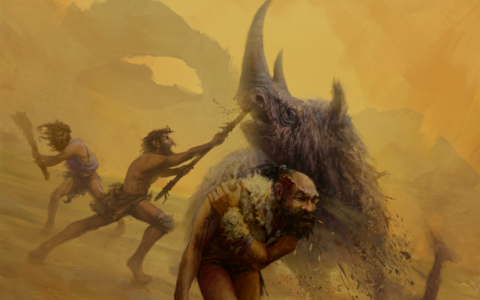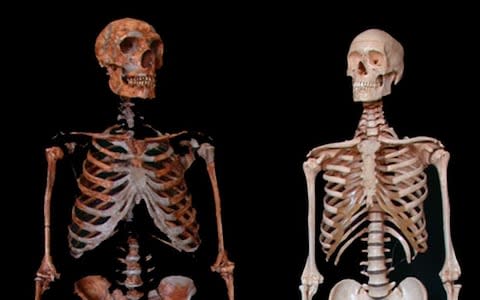Neanderthals were no more violent than modern humans, study suggests

The rehabilitation of Neanderthals has taken another step forward after scientists discovered they were no more violent than modern humans and could probably hunt just as well.
Previously, studies of Neanderthal skulls showed high rates of head injuries suggesting they were constantly getting into scrapes with large animals, and each other.
The evidence seemed to imply they had chaotic social structures, leading to violent infighting and such poor hunting techniques - relying on close contact weapons - that they were often mauled by cave bears or hyenas.
But a review of the evidence has shown modern man had a similar numbers of wounds, showing their lifestyles were probably quite similar.
“Our findings refute the hypothesis that Neanderthals were more prone to head injuries than modern humans,” said Professor Katerina Harvati, of the Institute of Evolution and Ecology, University of Tubingen in Germany.
“We therefore believe that the commonly cited Neanderthal behaviors leading to high injury levels, such as violent behavior and inferior hunting capabilities, must be reconsidered.
“Overall, however, our results suggest that Neanderthal lifestyles were not more dangerous than those of our ancestors, early modern Europeans.”

Neanderthals, lived in western Eurasia from 400,000 until they were wiped out around 40,000 years ago allowing modern humans to flourish.
It was widely believed that humans simply outcompeted them, but the new study suggests a different reason could be to blame.
Researchers trawled through a newly compiled database of more than 800 fossil specimens, which included 114 human skulls and 90 Neanderthals, both with and without injuries. They carried out rigorous statistical modelling accounting for sex, age at death, geography and state of preservation of the bones.
Results showed that males were more frequently injured than females among both Neanderthals and early modern humans, suggesting a division of labour. But there was no difference in the frequency of fractures.

The only difference discovered was the age of the injuries, with greater skull wounds among young Neanderthal skeletons, under the age of 30, whereas Upper Palaeolithic modern humans maintained consistent injury rates across age
“This could mean that Neanderthals were more likely to be injured at a younger age than Upper Paleolithic modern humans,” added Judith Beier, of Tubingen University, first author of the study.
The research was published in the journal Nature.
Writing in a linked editorial Marta Lahr of Cambridge University said: "This implies that Neanderthal trauma does not require its own special explanations, and that risk and danger were as much a part of the life of Neanderthals as they were of our own evolutionary past.
"The result adds to growing evidence that Neanderthals had much in common with early human groups."

 Yahoo News
Yahoo News 